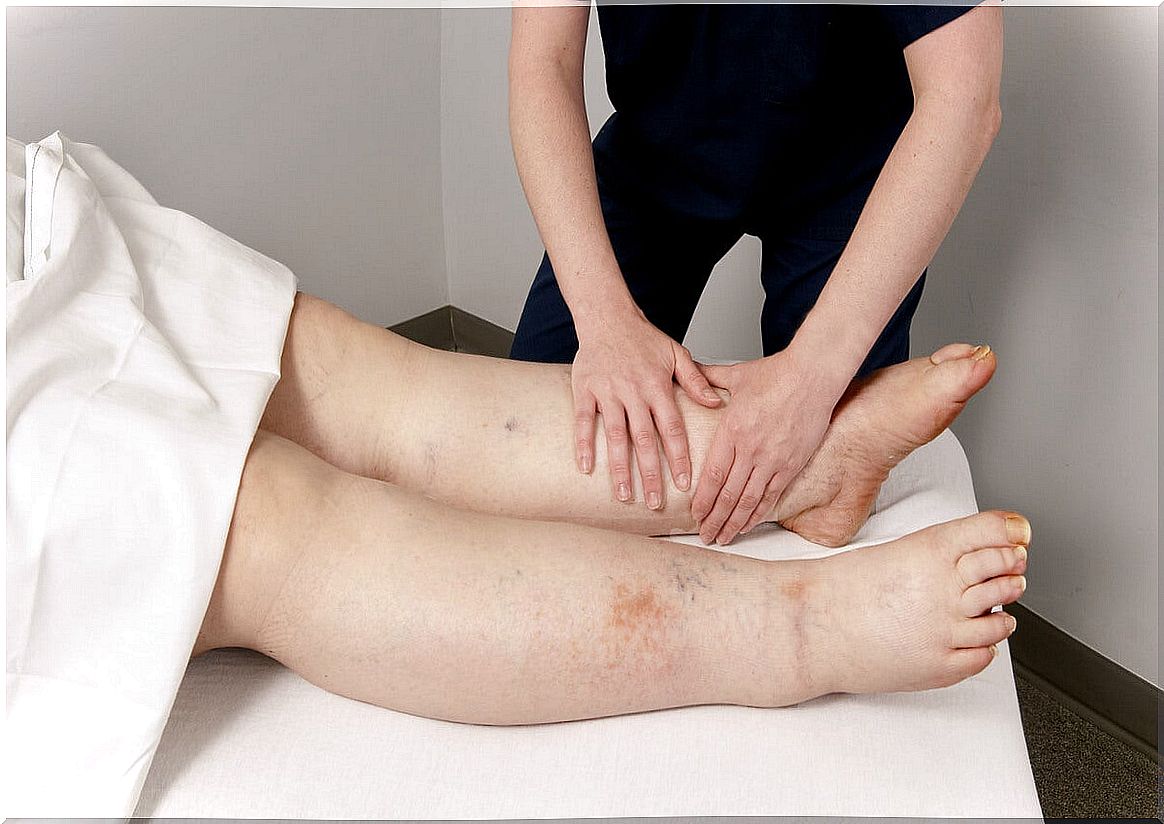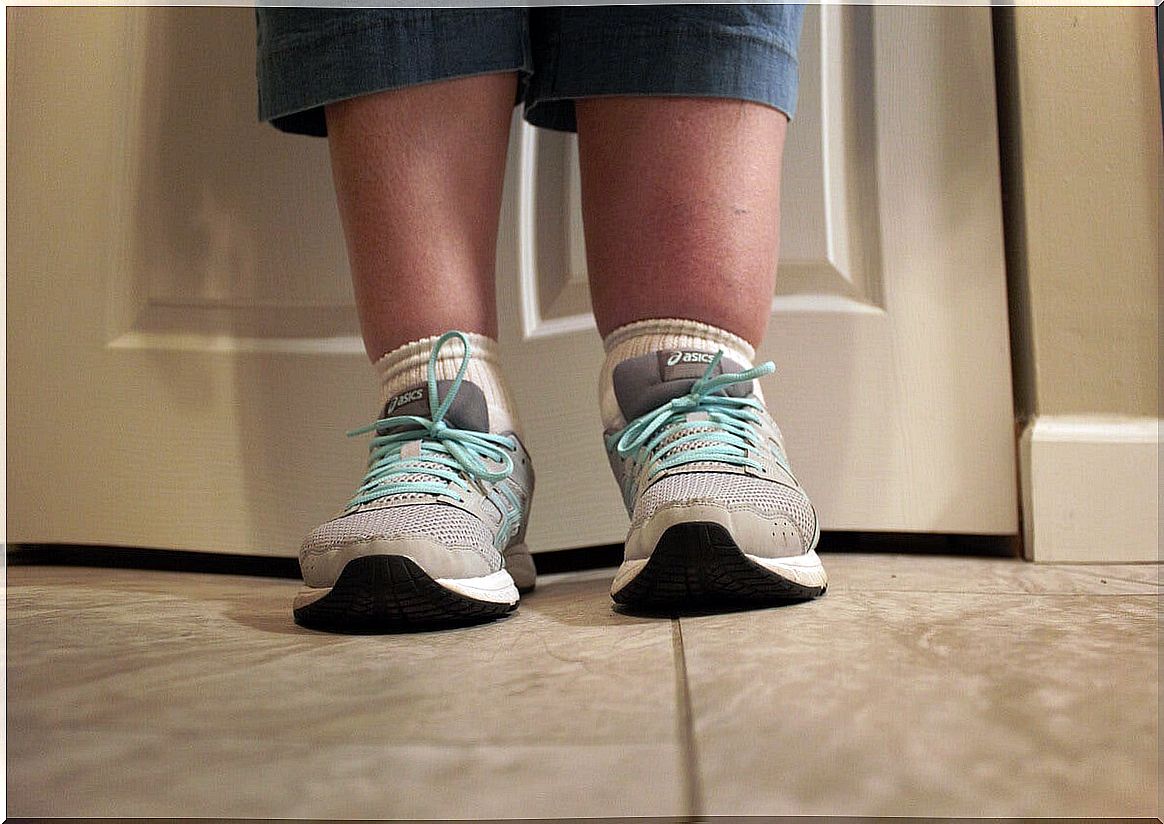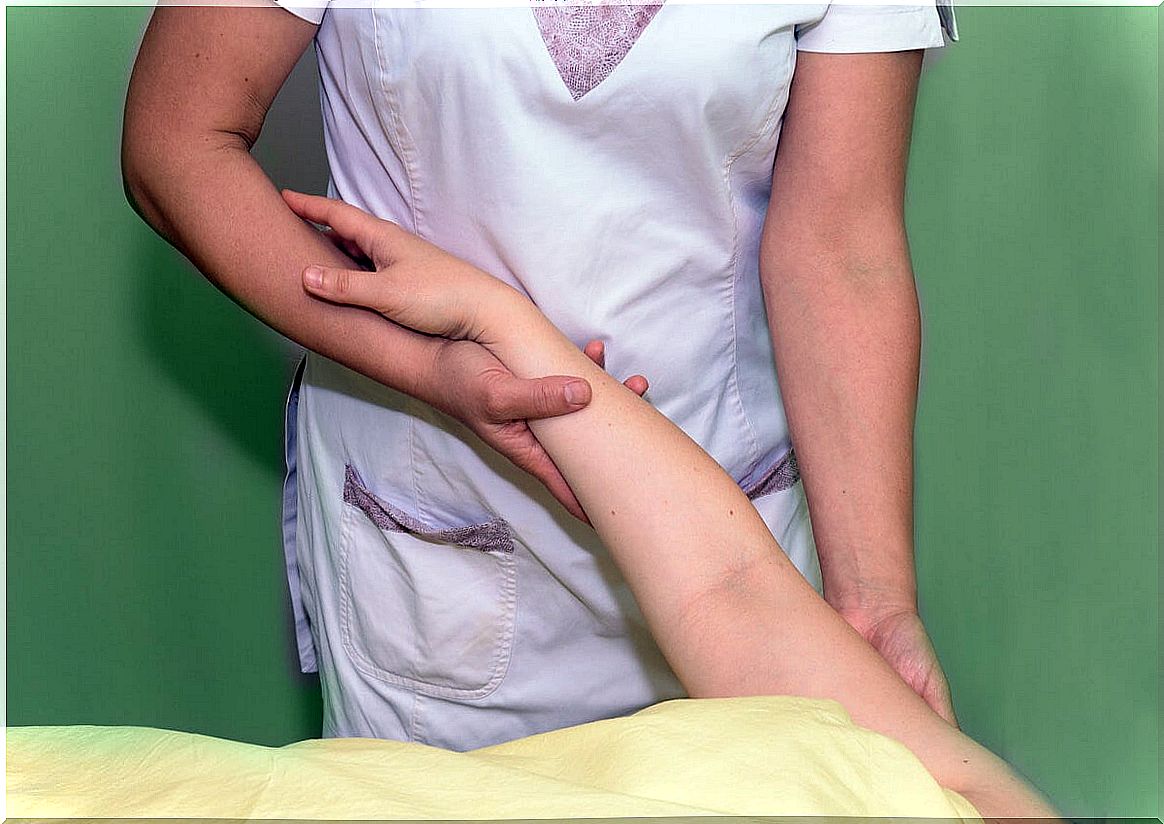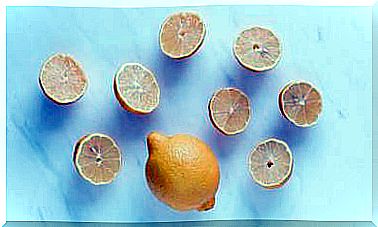Lymphatic Edema Or Lymphedema: Everything You Need To Know
Lymphedema or lymphatic edema is a condition that has no cure, but for which there is treatment. The most important thing is to diagnose it early and keep constant monitoring of the affected area.

Lymphatic edema or lymphedema is a collection of lymphatic fluid that causes swelling where it occurs. It usually appears on one of the arms or legs, but it can also be on both limbs or anywhere on the body.
Generally, lymphatic edema or lymphedema is the result of damage or removal of the lymph nodes or lymphatic vessels. This creates a dysfunction that results in buildup and inflammation.
Lymphedema has no cure, but it can be treated. In other words, it is a chronic condition against which, in any case, it is possible to carry out measures that alleviate and control the disease. Early diagnosis is very important in these cases.
Causes of lymphedema

The lymphatic system is made up of lymph nodes and lymphatic vessels. Its main function is to drain fluids from the tissues. These fluids, or lymph, carry proteins throughout the body and, in turn, pick up toxins, waste products, bacteria, and viruses.
The lymphatic vessels collect all this waste and carry it to the lymph nodes. There. a filtering process occurs due to the action of lymphocytes, cells that live in the lymph nodes and that play the role of fighting infection.
Ultimately, the waste is removed from the body and the filtered lymph returns to the bloodstream through the lymphatic vessels. Lymphedema occurs when the lymphatic system malfunctions. This results in buildup and swelling. There are two types of lymphatic edema or lymphedema: primary and secondary. Let’s see what each one consists of.
Hereditary or primary lymphedema
Primary lymphedema is rare. It is an inherited condition caused by abnormalities in the development of the lymphatic vessels. This occurs for any of the following reasons:
- Milroy disease or congenital lymphedema. The nodes form abnormally during childhood.
- Meige’s disease or early lymphedema. In this disorder, the malformation appears at puberty or during pregnancy. Sometimes it comes later, up to 35 years old, inclusive.
- Late onset lymphedema or late lymphedema. It is the least common of all and appears after 35 years.
Secondary lymphedema
Secondary lymphedema is the result of another disease or condition. It is much more frequent than the primary one and the most common is that it is the result of some procedure that damages the vessels or lymph nodes. The most common reasons why this happens are the following:
- Surgical procedures. During a mastectomy or other such surgery, lymph nodes can be injured or damaged. Also, in some cases of cancer it may be necessary to remove them.
- Radiation therapy for cancer. The radiation used can lead to scarring or swelling of the lymph nodes or lymph vessels.
- Cancer obstruction. Cancer cells can sometimes block lymphatic vessels and cause lymphedema to occur.
- An infection. Infections can help restrict the flow of lymphatic fluid and thus cause lymphedema.
Symptoms of lymphedema
The typical symptom of lymphedema is inflammation or swelling in the area where it occurs, usually an arm or a leg. It can be mild and hardly noticeable, moderate or severe; in the latter case, it can even make movement difficult.
The most common is that the inflammation is accompanied by the following manifestations:
- Feeling of stiffness or heaviness in the affected area.
- Dull pain or discomfort.
- Thickening and hardening of the skin; that is, fibrosis.
- Recurring infections.
In some cases, there are also changes in skin color, fluid leakage through the skin, and blisters. If lymphedema occurs in the head, it may cause symptoms like these:
- Vision impairment.
- Earache.
- Nasal congestion.
- Trouble breathing normally.
- Difficulty swallowing or speaking.
- Drooling
Diagnosis
The initial diagnosis is made from a physical examination and a medical interview. If the patient meets risk criteria for developing lymphedema, such as recent surgery involving lymph node involvement, the disorder could be diagnosed directly.
However, sometimes the cause is not so obvious or doubts persist. If so, one or more of the following tests will likely be ordered :
- Magnetic resonance imaging (MRI).
- Computed tomography (CT).
- Doppler ultrasound.
- Lymphatic system scan or lymphoscintigraphy.
These tests allow confirming the diagnosis and also establishing the level of severity, which is classified into four grades:
- Stage 0 or latent.
- Stage 1 or mild.
- Stage 2 or moderate.
- Stage 3 or severe.
How can lymphedema be treated?

There is no cure for lymphedema, but measures can be applied to control pain and decrease inflammation. What is done in these cases is to carry out actions such as the following.
Training
They are light and seek to generate a gentle contraction of the muscle in the affected area. The goal is to promote the drainage of lymphatic fluid and restore functionality to carry out daily tasks. Exercises must be guided by a certified therapist.
Massages
The manual lymphatic drainage technique can be very positive in promoting the flow of lymphatic fluid. This helps dissipate buildup that causes swelling. The important thing is that they are applied by a professional on the subject.
Involvement of the affected area
Bandaging the limb, usually an arm or a leg, helps the fluid flow back into the trunk. Typically, there is more compression towards the finger area and the bandage is looser as it moves up the limb. With the right instructions, the affected person can do it on their own.
Compression garments
They are long sleeves or stockings that are designed to compress the member and allow the lymphatic fluid to flow to other areas. The right thing to do is to wear one of these garments with the perfect fit; therefore, it is necessary to tailor them. They should be used when exercising with the affected limb.
Pneumatic compression
It consists of a sleeve that is worn over the affected arm or leg. Such a sleeve is attached to a pump that allows it to be inflated intermittently. Thus, pressure is exerted on the limb to draw the lymphatic fluid away from the fingers.
Complete decongestant therapy
It is a combination of typical therapies and lifestyle. It can be counterproductive for those with diabetes, hypertension, heart failure, blood clots, or acute infections.
Surgery
It is carried out only in the most severe cases with the aim of removing excess tissue from the affected area and, thus, reducing swelling. Currently, more specialized surgical procedures such as lymphovenous anastomosis or lymph node transplantation can also be performed.
Tips to cope with the disease
As lymphedema is an incurable condition, those who suffer from it must design strategies to deal with the disease in an appropriate way. The best thing to do in these cases is to apply the following measures:
- Inform yourself thoroughly on the subject. Having reliable information helps to better understand the disease and facilitates communication with the health personnel in charge.
- Take care of the affected area. It is important to clean your skin well every day and keep an eye out for any changes in the area, particularly cuts and cracks. It is recommended to use a moisturizing lotion to avoid dryness.
- Healthy lifestyle. A balanced diet, physical activity, and stress reduction not only help prevent complications from lymphedema, but they improve overall health.
- Psychological support. Self-help groups made up of people with the same disease can be an excellent support to cope with the situation. Psychological consultation is also an effective alternative.
Following medical indications is essential
Lymphedema is a disease that requires constant attention. It is very important to take good care of the affected area and adhere to the treatment persistently. This significantly improves the prognosis.
Neglect or non-adherence to treatment can lead to serious complications. The most dangerous are infections, lymphangitis, and lymphangiosarcoma. The way to avoid them is to focus on caring for the affected area.









